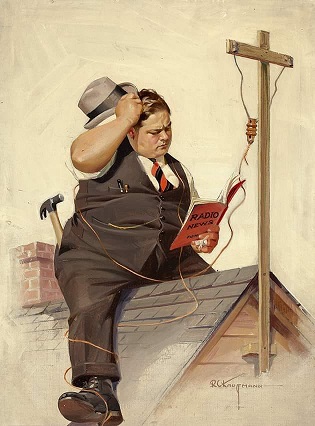There seems to be a lot of interest these days
concerning end fed wire antennas. It's easy to see why. They are cheap, easy to erect,
and they work in a pinch for any application. A lot of retired radio
buffs live in HOA limited residences. An end fed wire can help when a
stealth installation is needed. QRP, camping, operating from parks, it's
an antenna that can go the distance.
I have used this antenna design from time to time. The results varied from good to not so good. My first setup was my old Hammarlund HQ-129X. A
tube type receiver affectionately called a "Boat Anchor". In the early
1970's, it was common to use a radio like this in the shack of a young
Novice.
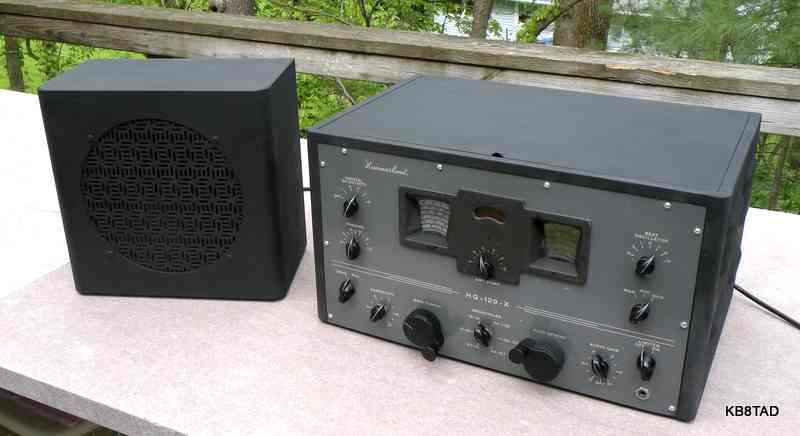
I simply ran a wire from the radio, through my
bedroom window, and outside to a pole. It worked pretty well and got me
started in the hobby. A typical setup like mine would go like this:

This antenna worked OK for receiving, but not for
transmitting. This is where an antenna tuner comes
into play. I had a small home brew tuner but it couldn't take much
power. So my results were limited. My Novice license
ran out and was not renewable back then. So it would be on down the road
before me and my old friend the end fed wire would be reunited.
I got licensed again in the early 1980's. I was
living in an apartment and didn't have much room for an antenna. There was an old piece of CATV 75 ohm coaxial cable that was in the
attic. It wasn't connected to anything so I shorted the ends and used it
as a random wire antenna.
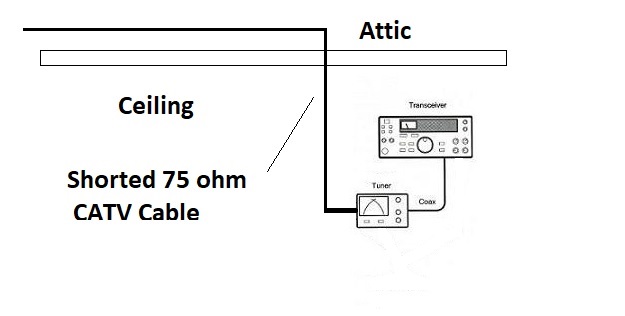
I was running an ICOM-730 with a MFJ 901-B tuner.
This set up got me on 80, 40, and 20 meters. I was on the second floor
of the old apartment building so this gave me some elevation. I was able
to work state side and some DX when conditions were good. My operating
desk was an ironing board !


Later I got married and was living in a small two
story house. My next setup used a random wire that ran from a back
utility room. It went up the outside trim of the house to a corner of
the roof. Then it ran across the yard to a pole. That antenna arrangement
went something like this:
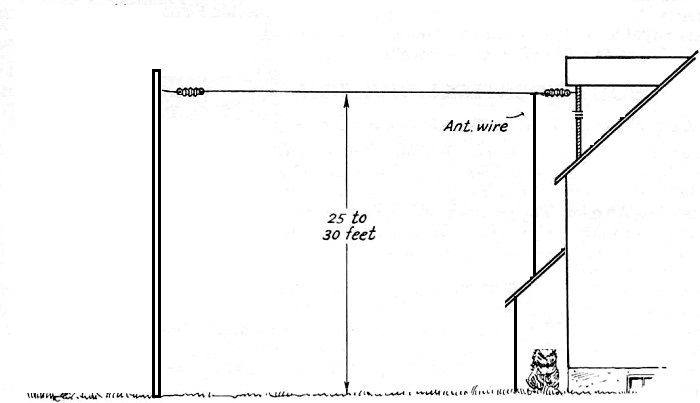
I was using a Yaesu FT-301D along with a MFJ-949E
tuner. I liked this tuner because it had a built in dummy load along
with the typical cross hair meters. Again this got me steady stateside
contacts and some DX. However, I was getting RF bites. I grounded the
station to a ground rod outside but still was getting RF burns. So I was
doing something wrong.
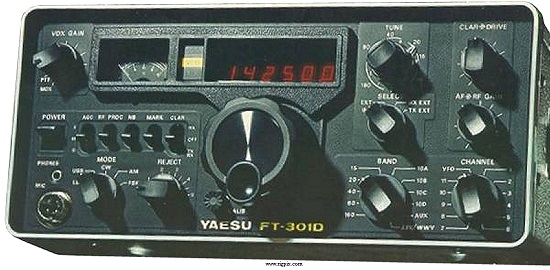
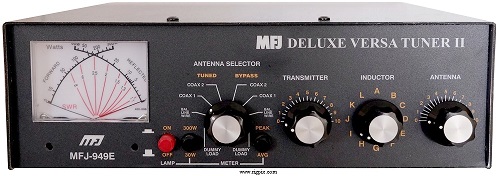
My next shack was in a new home I had built. I
decided to put my wire antenna from the old location into the attic of
my new house. The roof had a high apex so I was able to get some height
on this wire. That installation went like this :

I was running a Yaesu-FT-901DM along with my
MFJ-949E. This installation worked fantastic. I was able to run a little
bit of power from an old Dentron GLA-1000 amplifier. The extra 400 watts
made it where I was able to work just about anybody I heard. I almost
abandoned the idea of putting up a tower and a bigger antenna.
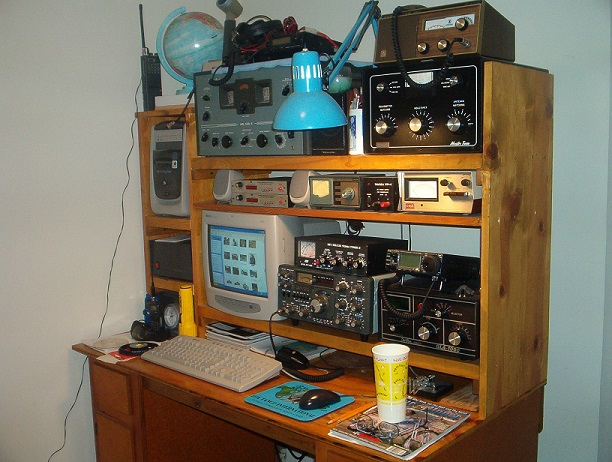
Later I did put up a tower and erected an 80 to 10
meter OCF dipole. I went along with this single HF antenna for a long
time. I also used the end fed attic wire for back up or when it was
stormy.
I eventually retired and moved to another town. Due to
my health, I can't climb towers anymore. So I started looking at antenna
designs. I saw that a lot of hams were using end fed wires at low
heights and were getting really good results. The big difference from my
previous experience was the use of a balun or an unun. I learned that
random wire users employed a 9:1 unun and halfwave wire users placed a
49:1 unun between the wire and coax feedline. I decided to go with the
random wire and the 9:1 unun.
I ordered a 9:1 unun from China on Amazon. It took
almost a month to get to my QTH but it was cheap, like $20 cheap. I know
you get what you pay for but this was my first go round with an unun. If
I fried it or it wouldn't work, I wasn't out a lot of money.
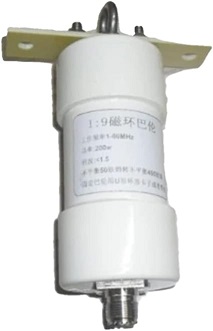
While I was waiting for the unun, I decided to play
around with my old setup. I still had the wire I used for 30 years. I
ran it outside and connected the wire to my old MFJ tuner. I couldn't
tune anything with that tuner. I tried my bigger tuners but they
couldn't match it either. With the wire only about eight feet off
the ground, the impedance was just too high for any of the tuners to
match the 62' feet of wire.
I looked around the internet to see what I could do to
optimize my antenna. Like with any wire antenna, you have to take care
about the length you chose. I decided to shorten my wire to 43' feet.
The 9:1 unun arrived just in time. I attached the wire
and placed it on a j-hook left from the CATV cable. The j-hook was
screwed into the eave of the house and was only about eight feet off the
ground. The other end went to a small tree in the back yard. It was just
the right distance. I connected about 35 feet of RG-8X coax I had on
hand, then ran it through an open window to the shack.

To tell the truth, I was a bit disappointed. While I
was able to actually match the input to the transceiver with my old MFJ
tuner, the reception was not very good. I also noticed the SWR on the
meter was constantly changing. This had me scratching my head a bit.
Then I remembered this happened to me before. Yep as I suspected. I had
a bad connection between the coax and the PL259 connector. I repaired it
and then gave everything another try.
I was blown away at the improvement. I was hearing
everything now. The former finicky antenna now tuned up great and stayed
where it was supposed to. I was able to now tune 80 through 10 meters. I
mean all the bands. This included 6 meters as well ! However, the SWR
could be as high as 3:1 on some of the bands.
I decided to go ahead and address the window. I cut 10
feet of coax and put two connectors on it. The other 25 feet got two
connectors then was placed outside. I had bought a Comet CTC-50 flat
feed through cable a couple of years earlier. It comes with screws and
double sided tape. I used the double sided tape on the inside and used
RTV silicone on the outside. I routed the coax up along my fiber optic
cable and tucked it into the vinyl trim on the house. The other end of
the cable came out right at the j-hook the unun was on. I had just
enough cable.



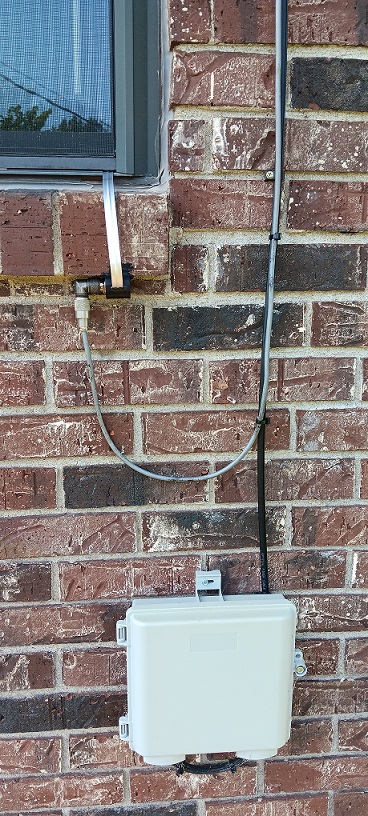
I was enjoying how everything was working out. I was
working all kinds of stations with my little wire but I was getting RF
on the speakers in the shack. These end feed antennas typically use the
outside of the feedline coax as a counterpoise. I had a choke balun
lying around so I put that in line where the coax came into the window.

This was a major improvement. The antenna was behaving
even better than before. I barely had to make any adjustments to the
tuner when I changed bands. I did get some RF on my speakers with two of
the bands but it was a lot less. I have some ferrite beads that can fix
that. No RF bites !
The last thing I did was take the wire I trimmed off
the antenna and connect it to the unun. I read where some people were
doing this. Some of the kits I saw online also used a counterpoise. I
used the 12' feet of wire and tucked it behind the vynil siding trim. I
didn't notice any change and my signal reports were the same.
Overall I would call this a success. I mean a 42' foot
antenna eight feet off the ground ? With 100 watts or less I'm working
DX, state wide nets, nation wide nets, and stateside contacts. The DX
stations give me a 5-5 to 5-7. The stateside and net stations give me a
5-7 to 5-9. Pretty amazing in my book.
I wanted to share my years of experience with end fed
wire antennas. As you see the different installations and QTHs give
different results. The final product with the 9:1 balun and choke balun
gave the best results.

|
